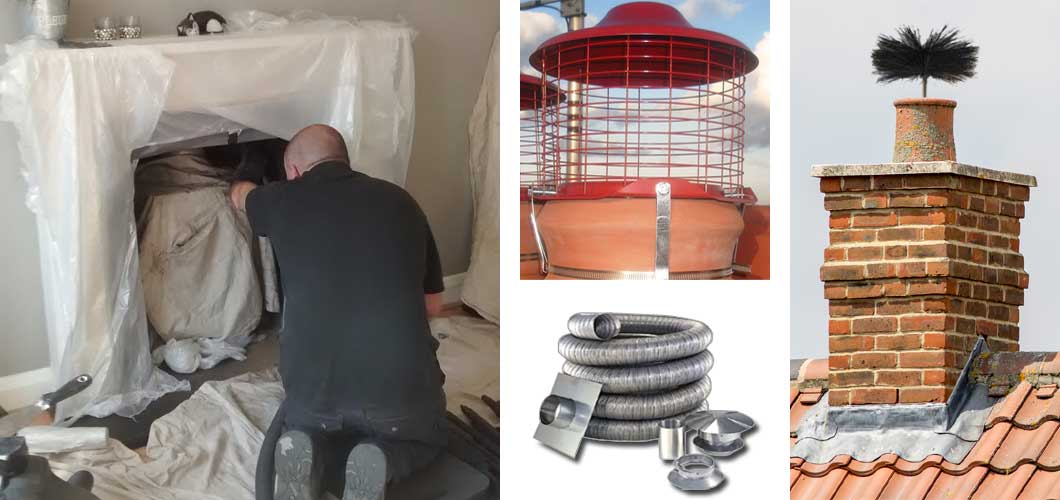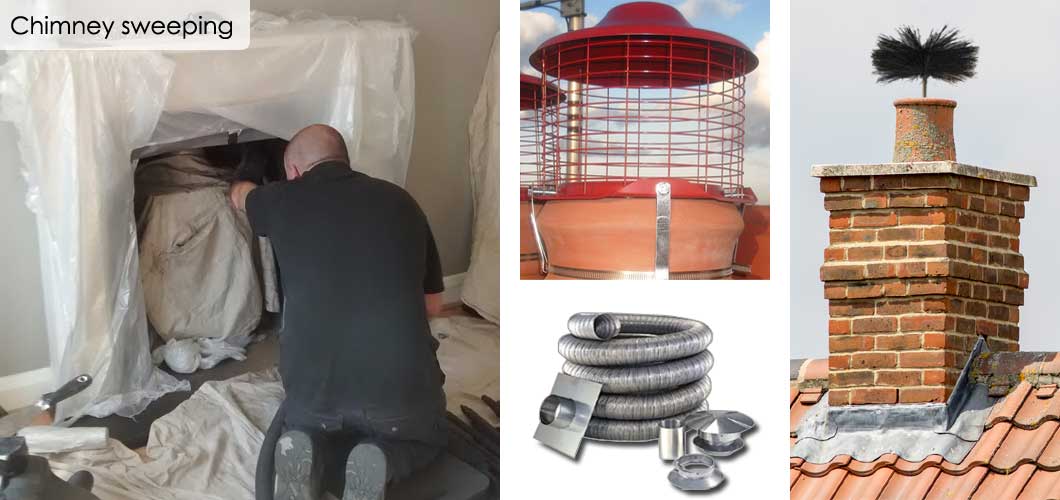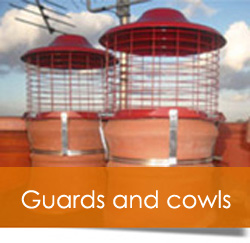

































Chimney Sweep Radlett
At Ansell Chimneys, we know how important it is for you to keep your chimney in tip top working order. It's not just a case of good housekeeping, it could save lives! So don't risk letting your chimney get clogged up and dangerous, call the professionals in today!
Our services include:
- Chimney Sweeping
- Installation of chimney liners
- Chimney Pots, Bird guards and Cowls
- Camera surveys
- Fitting wood burning and multi-fuel stoves
- Stove and fireplace servicing and repairs
- Chimney Smoke and integrity testing to BS5440
All installations carried out by
Qualified HETAS Registered Fitters.

Why not call Ansell Chimneys now for a free quote
If you would like to know more or are interested in a quote we would be happy to help. Phone us on 01923 661 614, email us at info@ansellchimneys.co.uk or fill in our enquiry form and we will be in touch as soon as possible.
Ansell Chimneys for service you can trust
Radlett is situated on the ancient Watling Street, which is one of the oldest track ways in all of Britain. Radlett has provided archaeologists with some superb archaeological finds. The earliest finds were of Mesolithic and Neolithic flints, which provide evidence that the Radlett area was inhabited in the Stone Age; the land was densely wooded and remained so until the Middle Ages.
The Catuvellauni tribe settled in parts of Hertfordshire, near St Albans and Wheathampstead in about 80BC, although no trace of settlement has been found in or near Radlett itself. The name Radlett appears to come from the Old-English rad-gelaete meaning a junction of the roads and it is likely that the settlement grew at the point where the ancient route from Aldenham to Shenley crosses Watling Street.
The Roman period in Radlett
During the Roman occupation of St Albans, which was then known as Verulamium, the area from Radlett to Brockley Hill was home to a number of major potteries, which supplied not only the Roman capital but other parts of the province. One of these potteries is known to have existed on Loom Lane, Radlett. Roman-era clay pits are still in evidence at the southern end of Radlett, in the area around Cobden hill and Tabard RFC. In addition, there is evidence of a Roman villa with a bath building, barn and tile kiln dating from the second to the fourth century AD, in the area of Netherwylde Farm.
The Post-Roman period in Radlett
It has been established that Radlett was settled by the Saxons by the sixth century, with suggestions that a Saxon church was established on the site of Aldenham Church during King Offa's time on the throne. For most of recorded history, the land to the East of Watling Street was administered separately to that on the West.
The Domesday survey of 1086 confirms that most of the land in and around Radlett was in the possession of the Abbey of Westminster, though parts of land to the east of Watling Street were claimed by St Albans. The two major tenants were listed as Geoffrey de Mandeville and Geoffrey de Bec and they leased part of their holdings to tenant farmers. At the time, Radlett was densely forested but was gradually cleared throughout the medieval period for agricultural use and the population lived in dispersed farm settlements adjacent to field strips or scattered around the outside edge of common land which made up a substantial part of the southern and western area of Radlett at the time.
A gruesome reminder of more brutal times in Radlett
It is known that in the thirteenth century, gallows were erected jointly by the Abbots of Westminster and St Albans in a part of Radlett called Keneprowe. Which is now Kemp Row, for trials that were conducted at Aldenham.
Radlett and its agricultural heritage
Radlett appears to have consisted of two farms: Darnells farm, which was first mentioned in 1358 and Gills Hill farm that was situated on the west side of Watling Street; and the estates of Aldenham Lodge, Newberries and Organ Hall on the east, plus Newlands and a few cottages. There are records of at least two other medieval moated homesteads within the Parish of Radlett, but there are no physical remains to support these claims.
A royal connection between Radlett and King Henry VIII
The first recorded reference of Radlett comes from 1453, when Radlett was often spelt with only one T, although a second was added sometime in the middle of the nineteenth century. With the dissolution of the monasteries in 1536, that were ordered by Henry VIII, the disputes over land ownership in the Parish between St Albans Abbey and Westminster Abbey ceased to be viable and the land was sold to create revenue for the Crown, whose finances were depleted by foreign wars and other costly indulgencies.
Radlett in modern times
In 1823, Radlett was the site of an infamous murder, it was a particularly notorious crime which became the subject of many books and stage plays. The victim, William Weare, was killed on Gills Hill Lane, which has since been referred to as Murder Lane, with this part of Radlett gaining such notoriety that it became a tourist attraction for some time.
In 1860 the Midland Railway was extended from Bedford into London and a station was built at Radlett connecting it with London. On 8 December 1865 the Ecclesiastical Parish of Radlett was created out of the eastern part of Aldenham and this marks the start of the modern history of the village. Development could only start when the existing Radlett landowners sold off their land for this purpose and this started in the final decade of the 19th century when land to the west of Watling Street was sold off. In 1910 the estate of Aldenham Lodge to the north of Shenley Hill was released for development and in 1935 the Newberries estate. Newberries mansion was demolished in the 1950s and Aldenham Lodge in 1964.
Aviation history of Radlett
There was a grass airfield just north of Radlett in 1929 for the production of aircraft. By 1939 Radlett Aerodrome was upgraded to have three hard runways for use in the production of Handley Page Hampden and Handley Page Halifax bombers during the Second World War. After the war the airfield was used for production of Handley Page Hastings transport aircraft and Handley Page Hermes airliners. Radlett hosted air shows in 1946 and 1947 which eventually moved to Farnborough. The Handley Page Victor bomber prototype was built in Radlett, with the main runway being extended in 1952 to allow flight testing, and there is now a road on this site named in its honour. Handley Page went bankrupt in 1969 and the Radlett airfield closed in 1970.
Radlett plays host to the world of dare devil entertainment
In 1977 Eddie Kidd the celebrated stunt rider jumped over fourteen London Double Decker buses at the former Radlett Aerodrome. He is the holder of many world records for jumping over cars and buses. He worked as a stunt double in many films, notably for Timothy Dalton in The Living Daylights, Roger Moore and Michael Caine in Bullseye! and Pierce Brosnan in GoldenEye, but the people of Radlett will always remember him for his world famous bus jump.
Radlett is growing, but not outwards!
The introduction of the Metropolitan Green Belt in the 1950s set a legal framework limiting further outward growth beyond the then existing limits of Radlett, and since then new development has been restricted to infilling within the built-up area. Despite this, many new houses continue to be built in former large gardens that already exist within the Radlett boundaries, and the population now stands at just over 10,000.
A solid fuel stove to keep your Radlett home warm this winter
There appears to be no end in sight for the crippling cost of gas and electricity, although the prices are expected to ease slightly, it is thought they will remain higher than before the cost of living crisis. Therefore, now is the perfect time to prepare your Radlett home for the colder weather by having a new solid fuel stove fitted. Ansell Chimneys will guide you through the process and before you know it, you will be enjoying a warm and cosy house this winter, without paying a fortune for the privilege.
Radlett is a gorgeous setting and it is hard to believe as you stroll along the almost quaint looking high street, that Radlett is nestled between rather large and busy towns and a mere stone's throw from major motorway networks. This ease of access makes Radlett a very popular place to live for people who work in London and other major cities.
Chimney sweeps in Radlett
Radlett has a high proportion of older properties, as well as some newer developments, but the amount that requires a chimney sweep remains pretty high. It's a simple fact that an older housing stock equals more working chimneys.
Quite a lot of the properties in Radlett still maintain an open fire or a solid fuel stove, meaning that they have to engage the services of a chimney sweep on a regular basis. Ansell Chimneys have been servicing the needs of Radlett residents for a number of years, keeping their chimneys clean and safe.
Chimney sweeps keep Radlett residents safe
A dirty chimney is a dangerous chimney, fact! The everyday use of fires and solid fuel stoves lead to a build up in soot and creosote that cling to the interior walls of the chimney breast. This build up within the chimney will eventually lead to a high concentration of flammable creosote and quantities of soot that can lead to a blockage. Both a blocked chimney and one that is at risk of bursting into flames are a serious threat to the health and safety of our Radlett clients, so a regular chimney sweeping schedule is a must.
A little about Radlett
Radlett is a lovely village in Hertfordshire that sits between Elstree and St Albans on the ancient road of Watling Street. Radlett is in the council district of Hertsmere in the south of Hertfordshire, and is covered by two wards; Aldenham East and Aldenham West. It is located inside the M25 motorway. These wards, particularly Aldenham West, also include some outlying hamlets, including Aldenham, High Cross, Letchmore Heath, Patchetts Green and Round Bush.
Pre-Roman period of Radlett
As mentioned above, Radlett is situated on the ancient Watling Street, which is one of the oldest track ways in Britain. There have been various archaeological finds of Mesolithic and Neolithic flints that provide conclusive evidence that the Radlett area was inhabited during the Stone Age; the land around Radlett was densely wooded and remained so until the Middle Ages. The Catuvellauni tribe settled in parts of Hertfordshire, near St Albans and Wheathampstead in about 80BC, although no trace of settlement has been found in or near Radlett itself. The name Radlett is believed to come from the Old-English rad-gelaete meaning a junction of the roads and it is likely that the settlement grew at the point where the ancient route from Aldenham to Shenley crosses Watling Street.
Roman period of Radlett
During the Roman occupation of Verulamium, which is now the modern day St Albans, the area from Radlett to Brockley Hill was home to a number of major potteries, which supplied not only the Roman capital but other parts of the province. One of these potteries is known to have existed on Loom Lane. Roman-era clay pits are still in evidence at the southern end of Radlett, in the area around Cobden hill and Tabard RFC. In addition, there is evidence of a Roman villa with a bath building, barn and tile kiln dating from 2nd to 4th century AD, in the area of Netherwylde Farm.
Radlett after the Roman period
Radlett was settled by the Saxons by the sixth century; with suggestions that a Saxon church was established on the site of Aldenham Church during the time that King Offa sat on the throne. For most of recorded history, the land to the East of Watling Street was administered separately to that on the West.
Radlett in the Domesday Book
The Domesday survey of 1086 confirms that most of the Radlett land was in the possession of the Abbey of Westminster, though parts of the land to the east of Watling Street were claimed by St Albans. The two major tenants in the Radlett area were listed as Geoffrey de Mandeville and Geoffrey de Bec and they leased part of their holdings to tenant farmers who had to pay them rent and an oath of fealty. The Radlett area was densely forested but was gradually cleared throughout the medieval period for agricultural use and the population lived in dispersed farm settlements adjacent to field strips or scattered around the periphery of common land which made up a substantial part of the southern and western area of Radlett.
A grim reminder of the past in Radlett
It is known that in the thirteenth century, gallows were erected jointly by the Abbots of Westminster and St Albans in what is now Kemp Row. The gallows in Radlett would be the last part of a journey for the poor unfortunates that had been tried and convicted of various crimes in the nearby Aldenham courts of justice.
Radlet becomes Radlett
The first recorded reference of Radlett comes from 1453 and it was usually spelt with just the one 'T' until the mid-nineteenth century. With the onslaught of King Henry VIII's dissolution of the monasteries in 1536, the disputes over land ownership between St Albans Abbey and Westminster Abbey ceased to be viable and the land where Radlett stands was sold to create further revenue for the increasingly greedy Crown estate. Henry VIII had spent much wealth on foreign campaigns and sought to boost his coffers with the riches of the monasteries and to expand his new Church of England and the protestant faith.
The modern period for Radlett
In 1823 Radlett was the site of the Radlett murder, a now famous crime which became the subject of many books and stage plays over the coming years. The victim, William Weare, was killed on Gills Hill Lane, which soon became popularly known as Murder Lane, with the site gaining such notoriety that it became a tourist attraction for some time.
In 1860 the Midland Railway was extended from Bedford into London and a station was built at Radlett connecting it with London. On 8 December 1865 the Ecclesiastical Parish of Radlett was created out of the eastern part of Aldenham and this marks the start of the modern history of the village. Development could only start when the landowners sold off their land for this purpose and this started in the final decade of the 19th century when land to the west of Watling Street was sold off. In 1910 the estate of Aldenham Lodge to the north of Shenley Hill was released for development and in 1935 the Newberries estate. Newberries mansion was demolished in the 1950s and Aldenham Lodge in 1964.
Aviation history in Radlett
Handley Page Ltd opened a grass airfield just north of Radlett in 1929 for the production of their aircraft. By 1939 Radlett Aerodrome was upgraded to have three hard runways for use in the production of Handley Page Hampden and Handley Page Halifax bombers during the Second World War, securing the Radlett area as a major contributor to the war effort, but also making the location a prime target for the German Luftwaffe.
After the end of the war, the airfield near Radlett was used for production of Handley Page Hastings transport aircraft and Handley Page Hermes airliners. The SBAC held air shows at the location in 1946 and 1947 which subsequently moved to Farnborough. The Handley Page Victor bomber prototype was built there too, with the main runway being extended in 1952 to allow flight testing, and there is now a road on this site named in its honour next to a DPD depot. Handley Page went bankrupt in 1969 and the airfield closed in 1970.
Sport and entertainment in Radlett
In a break from the usual route, the 1948 Olympic Marathon went through Radlett. The format was changed to include an out-and-back course from the Empire Stadium at Wembley in London.
In 1977 Eddie Kidd the stunt rider, who was to become Britain's answer to America's Evel Knieval, jumped over 14 London Double Decker buses at the former Radlett Aerodrome. Sadly, he was paralysed and suffered brain damage following an accident in 1996.
Legislation to keep Radlett the same
The introduction of the Metropolitan Green Belt in the 1950s set a legal framework limiting further outward growth beyond the then existing limits of Radlett, and since then new development has been restricted to infilling within the built-up area. Despite this, many new houses continue to be built in former large gardens, and the population of Radlett now stands at just over 10,000.
Radlett fire station
In 2005, and 2006, there was a long and hard fought campaign in Radlett and the surrounding areas to save the local Fire Station, which was opened a century before. Unfortunately, the campaign failed, and Radlett fire station was closed in October 2006. The campaign continued for a while after the closure; however the fire station has now been demolished.
Ansell chimney sweeps keeping your chimney safe and clean in Radlett
So, if you live in the Radlett area and want to keep your chimney clean and safe, call Ansell Chimneys. We have professional chimney sweeps that can set up a regular chimney sweeping schedule to ensure you never go into the colder months with a dirty or dangerous chimney.
Remember, it's not just the soot and creosote that can present a hazard in a chimney either. Birds and squirrels may have nested in your chimney and this can cause a dangerous blockage that needs clearing. Leaf litter from nearby trees can also cause issues with a safely functioning chimney.
Ansell chimneys can also provide and fit bird cowls to your chimney to prevent unwanted nesting as well as chimney sweeping services. This means that we are quite simply a one stop shop for all things to do with chimney maintenance, so why not call us today?
Why not call Ansell Chimneys now for a free quote
If you would like to know more or are interested in a quote we would be happy to help. Phone us on 01923 661 614, email us at info@ansellchimneys.co.uk or fill in our enquiry form and we will be in touch as soon as possible.
Ansell Chimneys
t. 01923 661 614 | m. 07941 282 325 | m. 07976 318 160 | Email us
t. 01923 661 614
m. 07941 282 325
m. 07976 318 160
Email us
Abbots Langley
Barnet
Borehamwood
Bovingdon
Bricket Wood
Bushey
Chorleywood
Croxley Green
Elstree
Harpenden
Hemel Hempstead
Kings Langley
Little Chalfont
Northwood
Pinner
Potters Bar
Radlett
Rickmansworth
Shenley
South Oxhey
Sarratt
Stanmore
St Albans
Tring
Watford
Abbots Langley | Barnet
Borehamwood | Bovingdon
Bricket Wood | Bushey
Chorleywood | Croxley Green
Elstree | Harpenden
Hemel Hempstead | Kings Langley
Little Chalfont | Northwood
Pinner | Potters Bar
Radlett | Rickmansworth
Shenley | South Oxhey
Sarratt | Stanmore
St Albans | Tring
Watford
Abbots Langley | Barnet | Borehamwood | Bovingdon | Bricket Wood
Bushey | Chorleywood | Croxley Green | Elstree | Harpenden
Hemel Hempstead | Kings Langley | Little Chalfont | Northwood | Pinner
Potters Bar | Radlett | Rickmansworth | Shenley | South Oxhey
Sarratt | Stanmore | St Albans | Tring | Watford
Abbots Langley | Barnet | Borehamwood | Bovingdon | Bricket Wood | Bushey
Chorleywood | Croxley Green | Elstree | Harpenden | Hemel Hempstead | Kings Langley
Little Chalfont | Northwood | Pinner | Potters Bar | Radlett | Rickmansworth
Shenley | South Oxhey | Sarratt | Stanmore | St Albans | Tring
Watford









